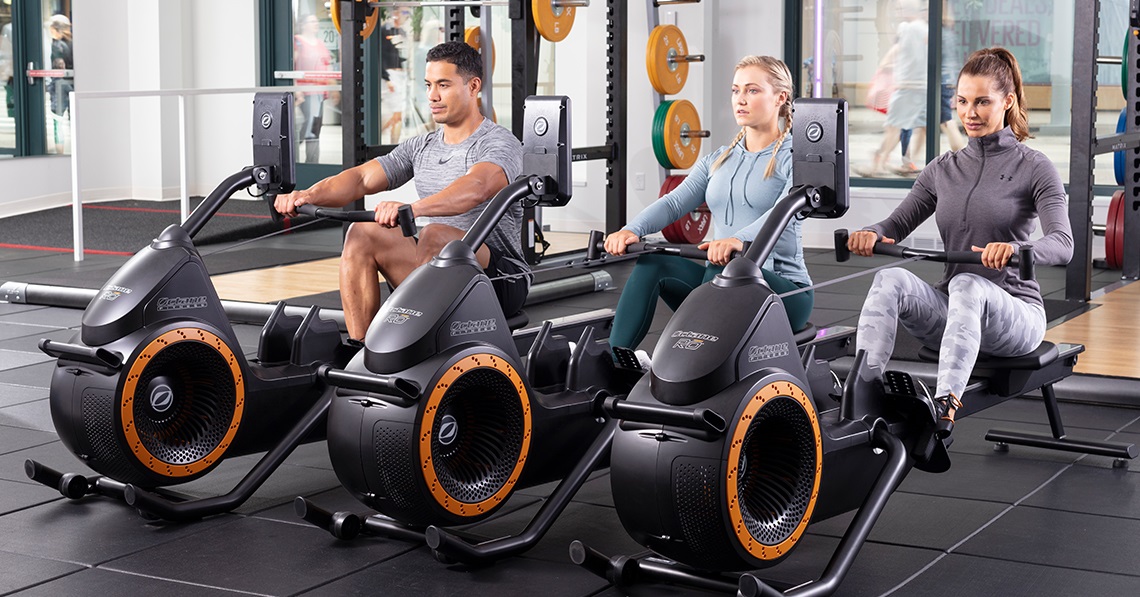 One of the best modalities for low-impact, total-body conditioning is indoor rowing, which has grown increasingly popular with the boom in small group training, HIIT and functional workouts. Studies show that you work as much as 86% of your muscle mass when rowing and can torch a ton of calories.
One of the best modalities for low-impact, total-body conditioning is indoor rowing, which has grown increasingly popular with the boom in small group training, HIIT and functional workouts. Studies show that you work as much as 86% of your muscle mass when rowing and can torch a ton of calories.
While rowing technique isn’t necessarily difficult to master, it does require effort and awareness. It’s easy to have poor form on the rower, which means you won’t maximize your results, you may get fatigued quickly or suffer more aches and pains. Because rowing looks intuitive, people can mistakenly assume that there’s nothing to learn.
4 Stages of Rowing Stroke
Without getting too complicated, it’s important to understand the basic rowing stroke, which has four components:
- Catch – Grasp the handle with both hands and arms outstretched, with the seat slid forward and slight lean forward from the hips, with the knees bent over the heels.
- Drive – Press feet against foot plates until legs are almost fully extended; begin to pull the handle toward the chest while sitting up straight.
- Finish – Pull the arms all the way into the abdomen with the torso leaning back slightly and the legs fully extended.
- Recovery – Bend the knees and slide the seat forward while leaning forward from the hips and extending the arms.
Although there are four stages, they should be performed in a smooth, fluid motion throughout the workout. Here are additional indoor rowing tips to make the most of each exercise session (Thanks, Breakingmuscle.com!):
Indoor Rowing Tips
- Favor your legs. When people use a rowing machine, they tend to emphasize the pull of the handle with the arms, and the legs just seem to go along for the ride. The leg muscles are much stronger than those in the arms, and therefore, you should drive hard with the legs, not only to last longer but also to perform better. It is said that 60% of the force production should come through your legs; only 10% is from the arms.
- Push through your entire foot. Try to keep the heels down, putting force all the way through the balls of the feet and the heels.
- Keep your back straight. Don’t slouch or round your spine, but sit up tall with the chest lifted. You will hinge from the hips on the catch and the recovery, but don’t repeatedly round and arch the back, or you are setting yourself up for some pain.
- Think of your torso like a pendulum. Hinging from the hips, you come forward to about one o’clock on the catch, and about 11 o’clock on the finish.
- Relax your upper body. Avoid elevating the shoulders, but instead draw them down away from your ears. Keep the elbows natural, without lifting them wide or tucking them in close to your torso. And keep your grip firm but not too tight.
- Pull the handle to the bottom of the ribs. Try not to pull the handle too high at the chest or too low at the belly button.
- Maintain proper sequencing. Remember: legs, hips, arms for the first three stages of rowing; then arms, hips, legs for the recovery phase.
- Control the recovery. You can be moving fast, but don’t slam the seat into your heels on the recovery. Stop when your shins are perpendicular with the ground.
- Exhale on the drive back, and inhale on the recovery forward. Typically, it’s one count back and two counts forward to give you time to fully take in oxygen.
- Set your mind. Rowing can be tough. Stay positive and confident, and repeat mantras if they help.